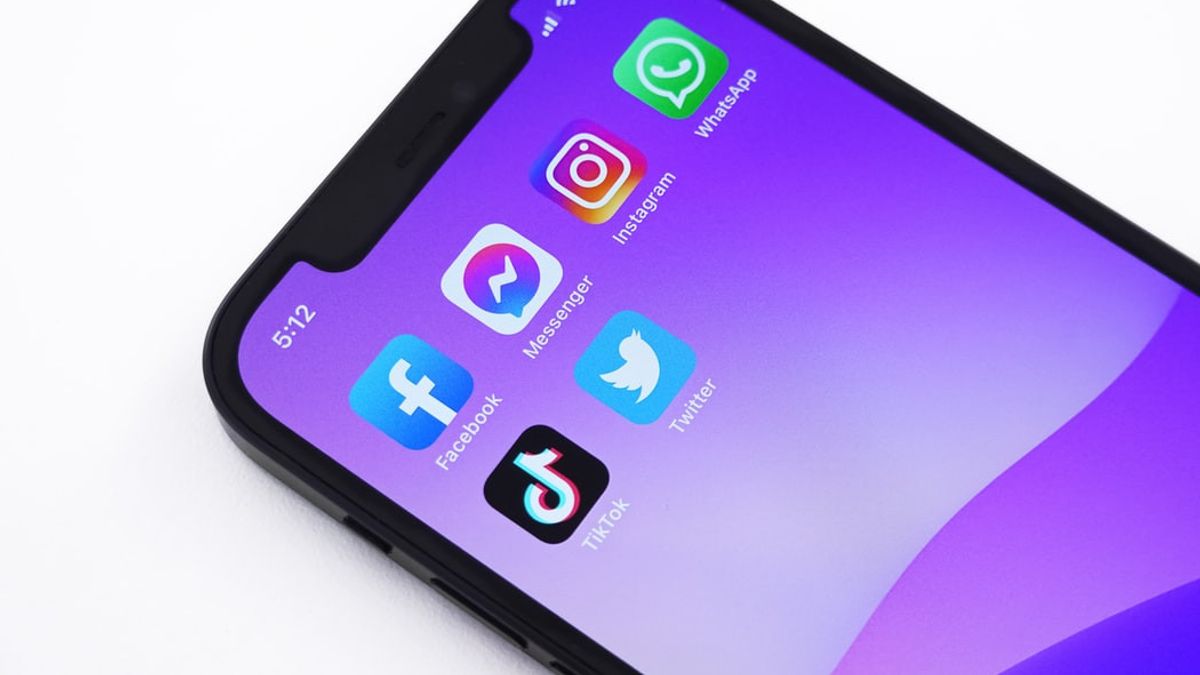JAKARTA - Social media is now the most popular platform for people in various circles. This is because in addition to being easy to use, they also often get new experiences.
However, not a few social media are used by hackers to steal users' personal data including their passwords. Of course, hackers will use all means to get it.
After getting, they will usually use it for profit. Such as being used for online loans, draining their accounts, and committing other frauds.
For that you need extra security on your social media accounts, now there are many platforms that provide double security such as two-factor-authentication, the following steps must be implemented to avoid hacking on your social media accounts, such as VOI quoted from Wired, Monday, 30 August.
Use Multi-Factor AuthenticationThe most effective way to protect your social media accounts is to enable multi-factor, or two-factor authentication, this applies to all your accounts. This method uses secondary information, often a code generated by an application or sent via SMS, along with a password.
This secondary snippet of information helps prove that you are actually trying to log in, as the codes are frequently accessed on your phone. Even if you have an easy-to-guess password, attackers are unlikely to gain access to an account with multi-factor authentication enabled unless they have your phone.
There is a guide for all accounts that support this method here, but first you need to enable it for all accounts that hold personal information that could potentially be misused. Like the messaging app WhatsApp, social media includes your Facebook, Instagram, Twitter and email accounts.
Not all forms of multi-factor authentication are equal. Code generator apps are considered more secure than getting codes via SMS, and moreover, physical security keys provide a stronger layer of protection.
Get Password ManagerThis is very important, because all passwords used for your social media accounts must be strong and unique. What this actually means is that they need to be long, include a mix of different character types, and not be used on some websites.
Your Twitter password cannot be the same as the password for your m-banking account and your home Wi-Fi network. The best way to do this is to use a password manager app.
Since passwords are managed, you will automatically have strong passwords, and keep them safe. Recommended apps for managing passwords are LastPass or KeePass.
Learn How to Spot Phishing AttacksClicking quickly can be your worst enemy. When a new email or text message arrives, and it contains something that can be tapped or clicked on. Hackers have used the keyword pandemic as a cover to launch wave after wave of phishing attacks and Google Drive scams.
To avoid this, the main thing to do is think before clicking. Fraudulent messages try to trick people into behaving in ways they are not used to. For example, pretending to be your boss by demanding outright or a message saying that an urgent response is needed.
There is no foolproof way to identify every type of phishing attempt or scam, scammers are constantly upping their game. But being aware of the threat can help reduce its effectiveness. Be careful, think before you click, and only download files from people and sources you know and trust.
Diligently Update Phones and ApplicationsEvery piece of technology you use from the Facebook app on your phone to the operating system that controls your home's smart lights is open to attack. Fortunately, the company always finds new bugs and fixes them. That's why it's important that you download and update the latest versions of the apps and software you're using.
Start with your phone. Navigate to your device settings and find out what operating system you are using. Then update if you are not using the latest version. For apps and games, Apple iOS 13 and above download updates automatically, although this setting can be adjusted. On Android, automatic updates can also be enabled by visiting the settings page in the Google Play Store.
Clean Digital FootprintOld social media that you no longer use and their login details can be used as weapons against you if you don't do anything about it. Hackers often use details from previous data breaches to access accounts people are currently using.
Reducing the amount of information available about your online life can help reduce your risk of being hacked. A very simple step is to clear your Google search history as often as possible, but you can also use Google's privacy-first alternatives.
There is much more you can do to reduce your digital footprint. Find old accounts that you no longer use and delete them. This will reduce the amount of spam you get and reduce the number of ways hackers can target you.
The English, Chinese, Japanese, Arabic, and French versions are automatically generated by the AI. So there may still be inaccuracies in translating, please always see Indonesian as our main language. (system supported by DigitalSiber.id)













